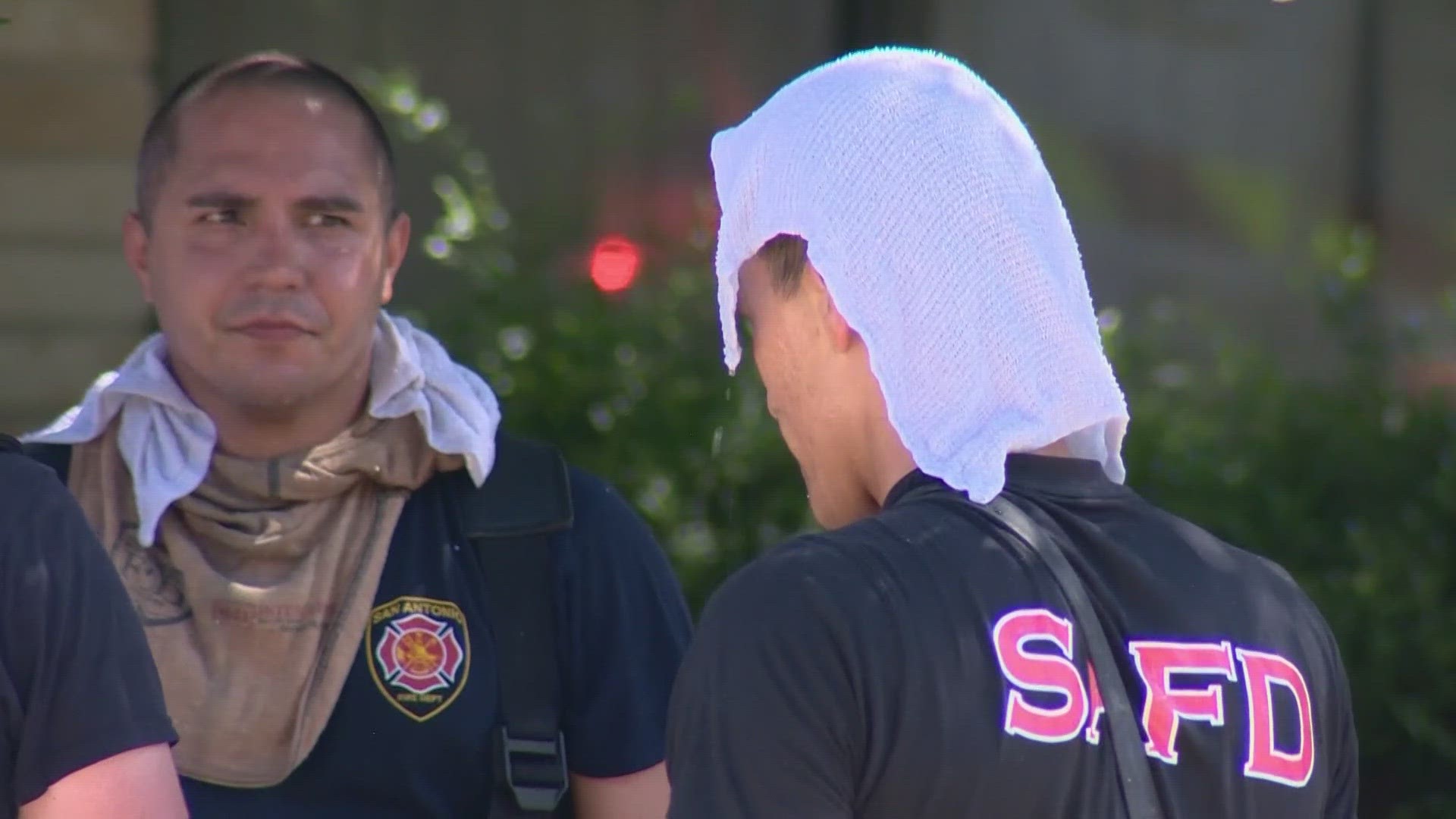SAN ANTONIO — With a heat advisory in effect for the local area through Wednesday evening, and heat index values predicted to reach a sweltering 111 degrees, everyone who works outside is thinking about protection from the extremes.
At a house fire on Dugas Drive Monday afternoon, the San Antonio Fire Battalion Chief in command of the scene said the heat response was rated at a Level 2, calling for more protective measures.
"By the time I arrived the fire was moving up over the top of the roof," Stephen Ruston said.
Ruston said fighting a fire and the heat is always a challenge, when the temperature at the time was around 105.
"Whenever we get into Level 2 heat and we are way above that actual threshold for our department by policy, so we dispatch more resources."
Ruston said in addition to more manpower, they are using shorter shifts, rotating firefighters out for breaks every 15 minutes.
"Now we're taking a precautionary pace with our crews to make sure nobody gets behind the curve," Ruston said.
San Antonio Fire spokesman Joe Arrington agrees, battling a blaze while wearing about 70 pounds of protective gear is physically challenging.
"It's like walking around wearing a multi-layer oven mitt all over your body," Arrington said.
Arrington said both Fire and EMS crews are kept busy in the heat.
"We average, Fire and EMS, about 900 calls a day and we are seeing more heat related emergencies. Not exponentially more, but we do see more," Arrington said.
With regard to protecting their own personnel, they said hydration before, during and after all calls is essential, as is immediate cool down relief.
At the Dugas scene, there was a non-stop effort to provide water and electrolyte drinks.
Towels soaked in a five-gallon bucket of ice water were a life-saving fashion trend, draped over the heads and necks of the firefighters who emerged from the burning home.
Arrington said fires aren't the only hot zones.
"We're not just dealing with fires. We're also out on the highways and when you're standing on the concrete, on the blacktop, for a length of time at an automobile accident, that takes a toll on you on a medical call," Arrington said, adding "We don't do a lot of calls in a nice 68 degree walk in cooler. We do a lot of things outdoors so it takes a toll on our firefighters but we encourage hydration all day long and getting rest when they can."
Arrington said what works for firefighters can work for citizens as well, especially those who are especially vulnerable.
"Especially your elderly neighbors, checking them, making sure they are staying cool and if they don't have air conditioning, making sure they have a box fan. Project Cool is a perfect example of a partnership that we have within the city with all the different agencies," Arrington said.
With high temperatures predicted to remain in the local area for the next few days, here are some beat the heat tips. Here is a link to Project Cool for a free box fan. If you're looking for a place to stay cool, you can look at this map.

